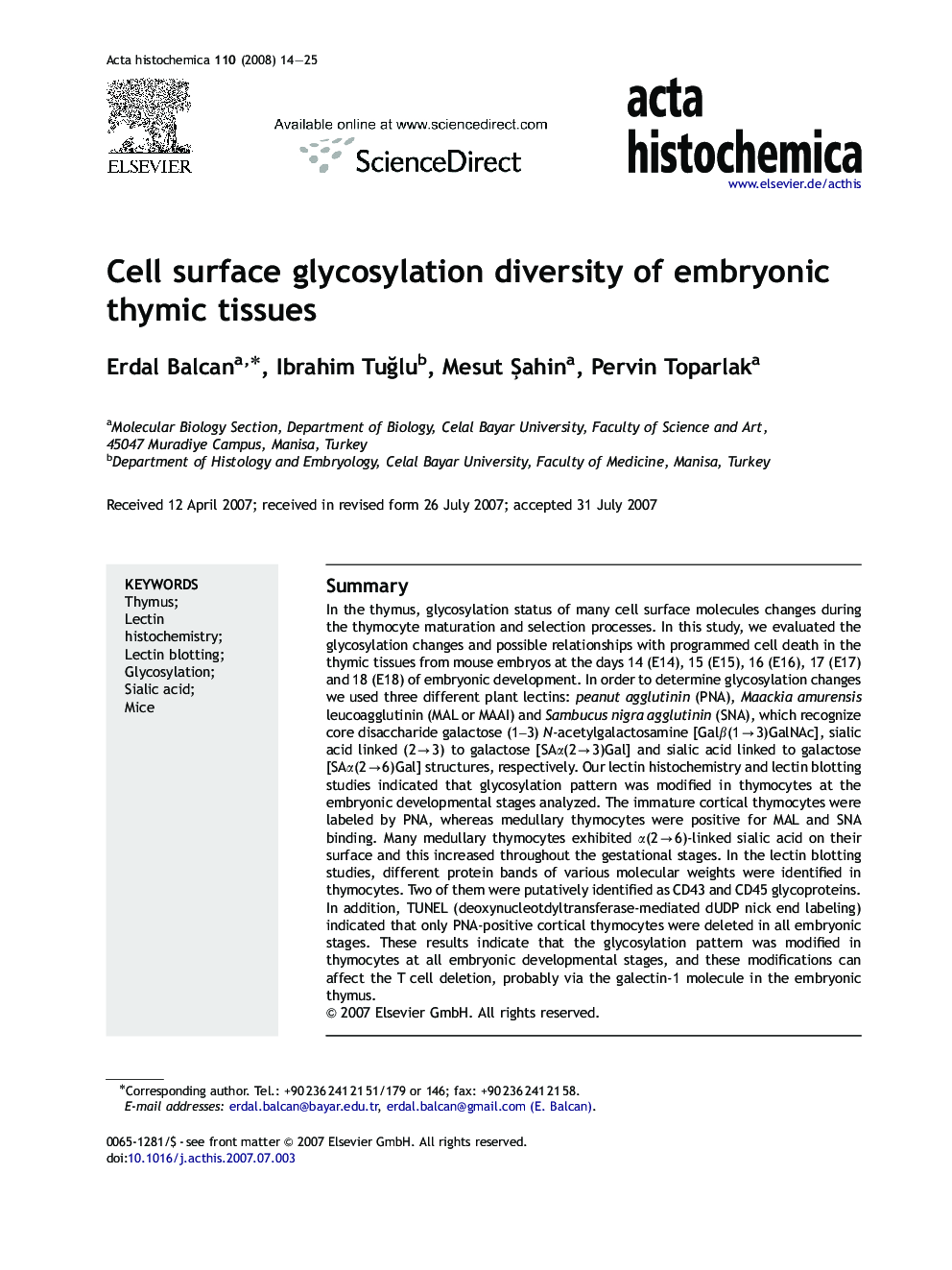| Article ID | Journal | Published Year | Pages | File Type |
|---|---|---|---|---|
| 1924239 | Acta Histochemica | 2008 | 12 Pages |
Abstract
In the thymus, glycosylation status of many cell surface molecules changes during the thymocyte maturation and selection processes. In this study, we evaluated the glycosylation changes and possible relationships with programmed cell death in the thymic tissues from mouse embryos at the days 14 (E14), 15 (E15), 16 (E16), 17 (E17) and 18 (E18) of embryonic development. In order to determine glycosylation changes we used three different plant lectins: peanut agglutinin (PNA), Maackia amurensis leucoagglutinin (MAL or MAAI) and Sambucus nigra agglutinin (SNA), which recognize core disaccharide galactose (1-3) N-acetylgalactosamine [Galβ(1â3)GalNAc], sialic acid linked (2â3) to galactose [SAα(2â3)Gal] and sialic acid linked to galactose [SAα(2â6)Gal] structures, respectively. Our lectin histochemistry and lectin blotting studies indicated that glycosylation pattern was modified in thymocytes at the embryonic developmental stages analyzed. The immature cortical thymocytes were labeled by PNA, whereas medullary thymocytes were positive for MAL and SNA binding. Many medullary thymocytes exhibited α(2â6)-linked sialic acid on their surface and this increased throughout the gestational stages. In the lectin blotting studies, different protein bands of various molecular weights were identified in thymocytes. Two of them were putatively identified as CD43 and CD45 glycoproteins. In addition, TUNEL (deoxynucleotdyltransferase-mediated dUDP nick end labeling) indicated that only PNA-positive cortical thymocytes were deleted in all embryonic stages. These results indicate that the glycosylation pattern was modified in thymocytes at all embryonic developmental stages, and these modifications can affect the T cell deletion, probably via the galectin-1 molecule in the embryonic thymus.
Related Topics
Life Sciences
Biochemistry, Genetics and Molecular Biology
Biochemistry
Authors
Erdal Balcan, Ibrahim TuÄlu, Mesut Åahin, Pervin Toparlak,
